






The Amboseli ecosystem experienced dry and hot conditions in October 2022. The wetland vegetation was almost depleted by the high population of animals feeding in the area, and vulnerable animals continued to die from drought-related complications. Many animals remained in the park, but they moved widely in and outside the park. This movement resulted in incidences of wildlife farm invasions and conflict with communities bordering conservation areas. The Amboseli Veterinary Unit attended to 11 cases in October, comprising 6 elephant cases, 3 giraffe cases and 1 lion case as well as an investigation into wildlife deaths
We thank Sheldrick Wildlife Trust (SWT) for funding the Amboseli Mobile Veterinary Unit. We also thank the staff and rangers from Kuku, BLF Eselenkei, and Amboseli Elephant Research for their assistance during veterinary interventions. Additionally, anyone who may not have been mentioned but supported the monitoring of distressed wildlife is highly appreciated.
Date Species Area Found
Reason for Intervention Outcome

02-Oct 22 Elephant Rukinga Ranch Arrow Arrow lodged in the head Successfully treated 09-Oct 22 Giraffe Amboseli Park HQs Natural Causes Found recumbent and unable to rise on its own after it stumbled and fell Task successful
09-Oct 22 Elephant Kuku Group Ranch Postmortem 5-year-old elephant calf found dead Drought complications
10-Oct 22 Giraffe Amboseli Primary HWC Fell after running into a clothesline at night Died.
15-Oct 22 Elephant Amboseli N.P. Postmortem 2 sub-adult elephants found dead in the park Drought complications
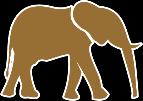
18-Oct 22 Elephant Amboseli N.P. Postmortem Found dead in the park Drought complications
18-Oct 22 Elephant Amboseli N.P. Natural Causes Infected wound on the back Successfully treated
19-Oct 22 Lion Amboseli N.P. Natural Causes Disemboweled and was hardly mobile Died
22-Oct 22 Giraffe Kuku Group Ranch Spear Wounded on the back with a spear Successfully treated
28-Oct 22 Elephant Lake Amboseli Rescue Found abandoned at the dried-up Lake Amboseli Task successful

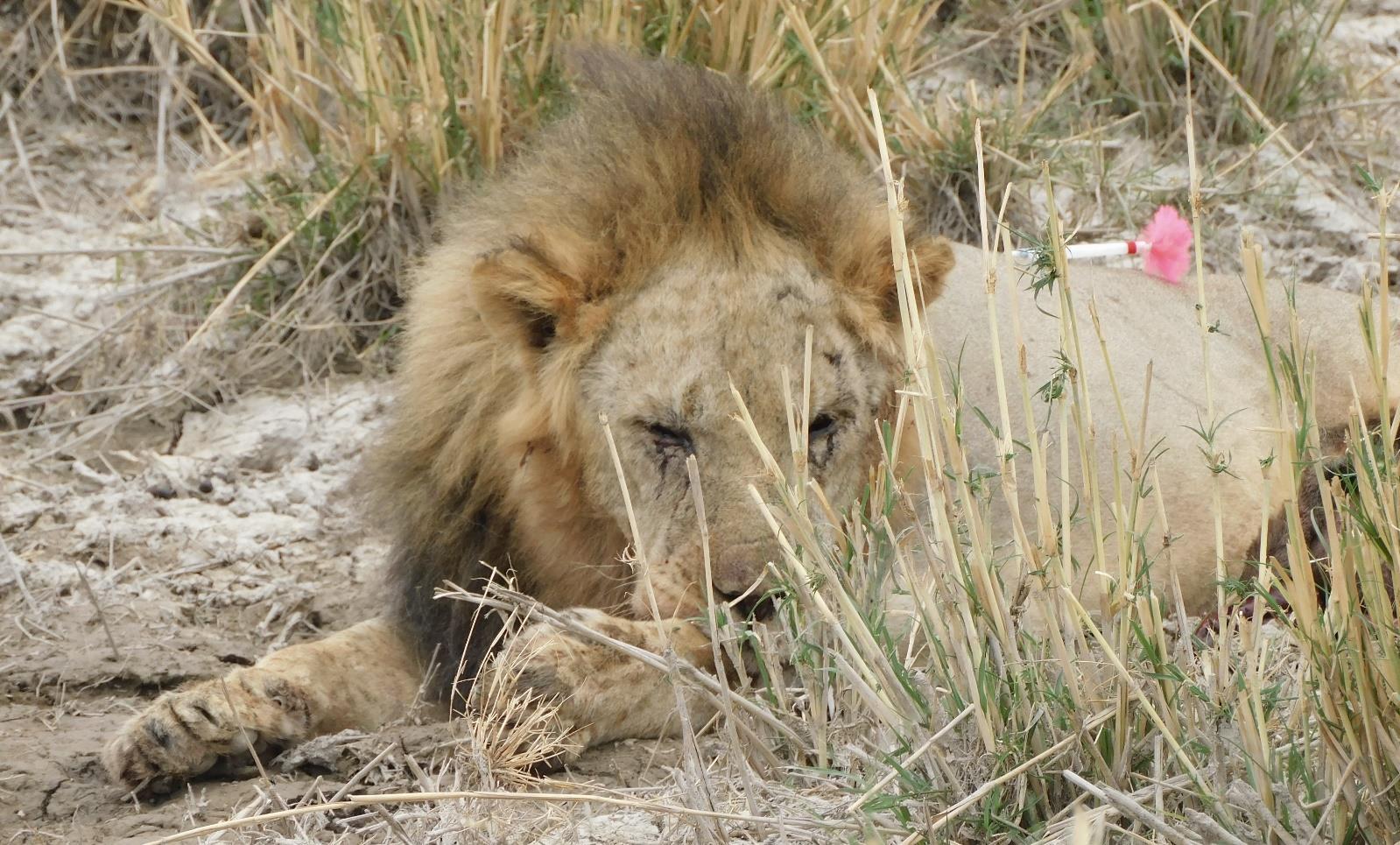
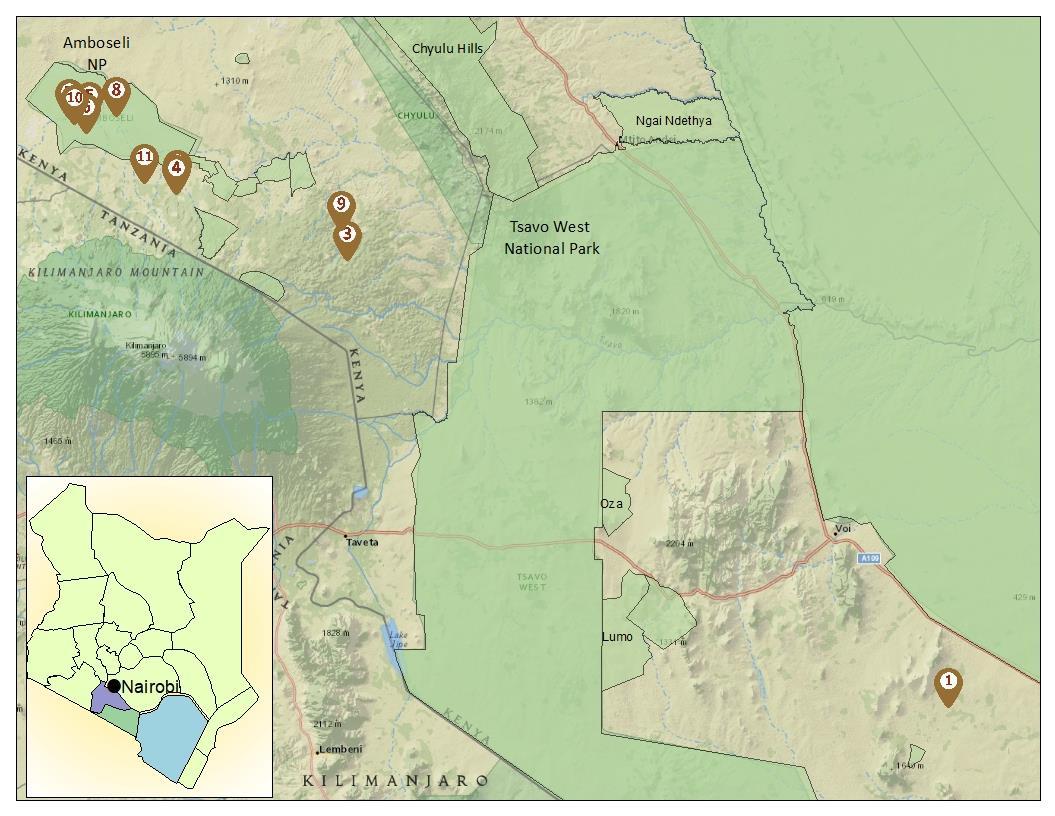
Wildlife Works reported a case of an adult female elephant with an arrow lodged in the head. The injured cow and her calf remained in a family herd which helped in monitoring her movements before the veterinary unit arrived. The elephant had a history of arrow injuries, and this was its 2nd treatment in 3 weeks. The cow is probably targeted by criminals, or the elephant is a persistent farm invader.
The elephant was darted with 20 mg Etorphine. It responded well to the drugs, and complete immobilization was achieved. However, 2 darts were used to immobilize the cow since the 1st dart was possibly discharged superficially and had little effect. The 2nd dart immobilized the elephant in about 20 minutes. The elephant had an arrowhead lodged in its head. The arrowhead was carefully removed then 100 ml Amoxicillin was given intramuscularly to cover for systemic bacterial infection.

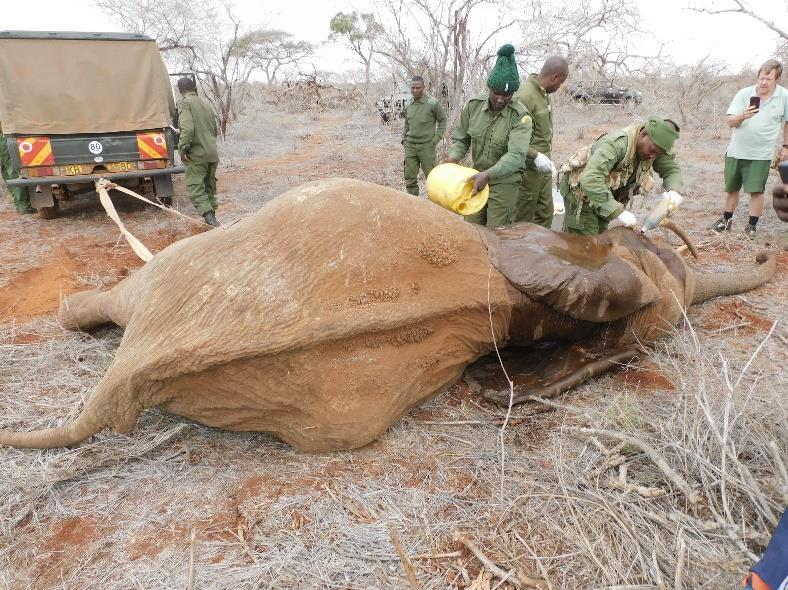
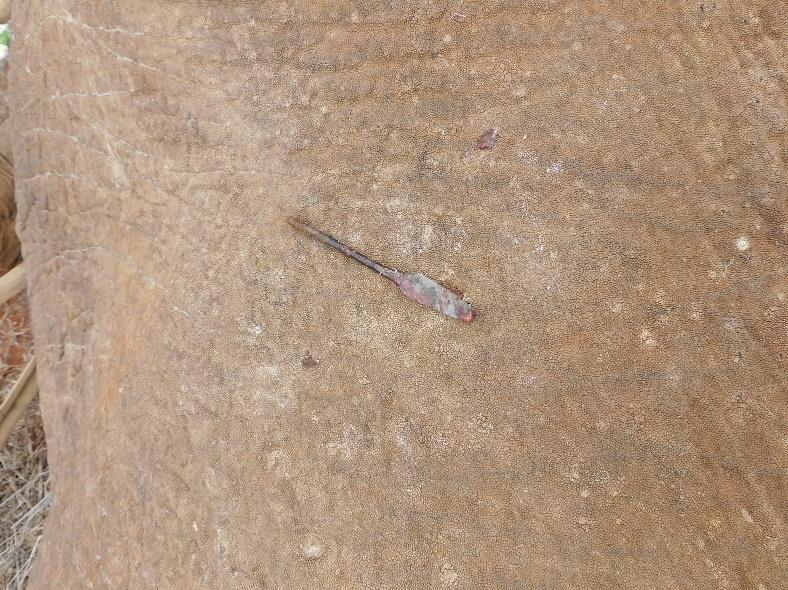
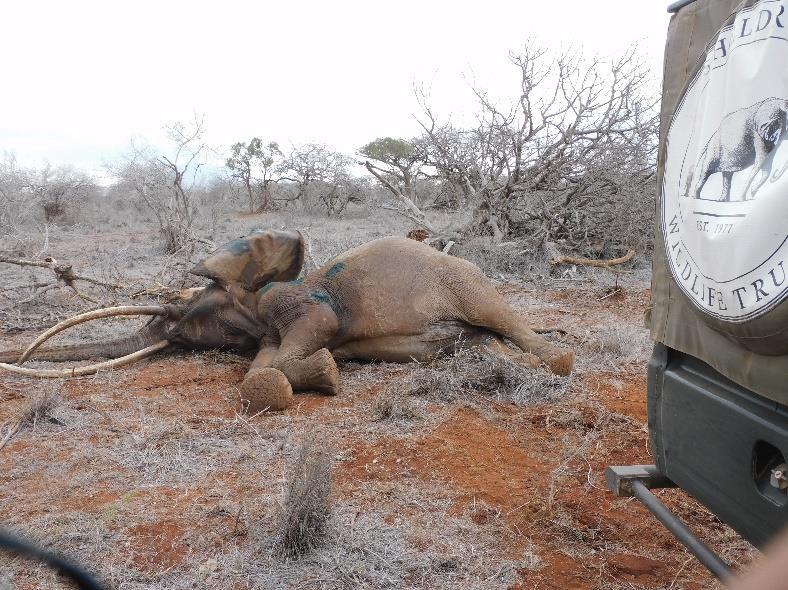
Anaesthesia was reversed with Diprenorphine. The elephant has a good prognosis. It took a long time for the elephant to recover from anaesthesia, and it had to be supported to rise thereafter. The weight exerted by her tusks together with her weakness due to advanced age is likely the main issue for poor revival after darting. The elephant presented as a poor candidate for future immobilization.
This adult female giraffe was found recumbent outside the Amboseli KWS headquarters. The giraffe entered the office ground searching for acacia browse. Unfortunately, the giraffe stumbled and fell and could not rise on its own.
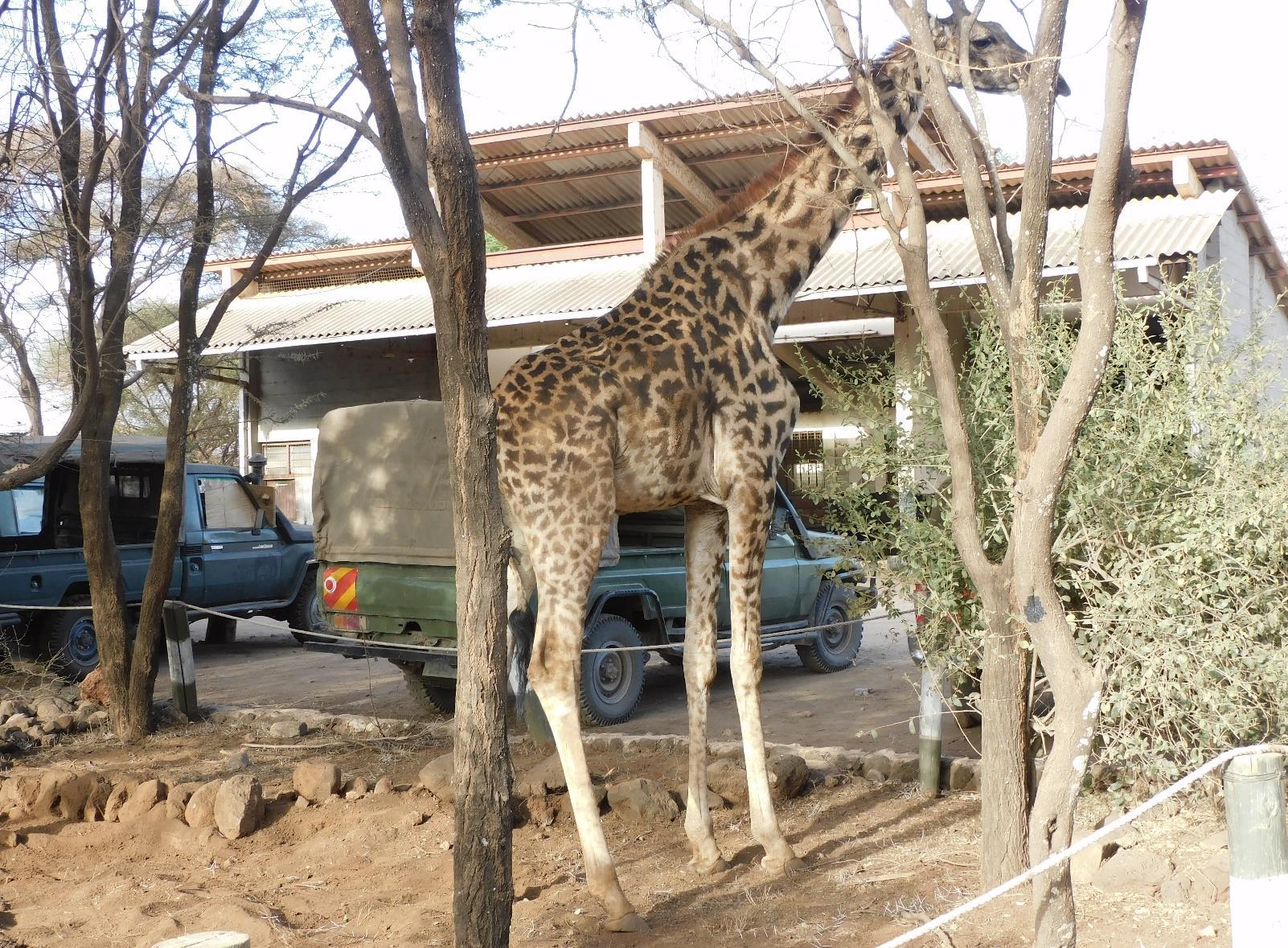
No chemical substance was used. The giraffe was assisted to rise with ropes slung around its body It was found healthy; it did not have any fracture or significant injury. However, the giraffe had a few marks on the face incurred as it struggled on the ground to rise. When the giraffe was on all fours, it assumed normal posture and walked away.
The giraffe has a good prognosis.
The Kuku Group Ranch patrol team reported an elephant calf carcass they found within the Ranch. The patrol team also helped the Veterinary Unit in accessing the site and in conducting the necropsy.
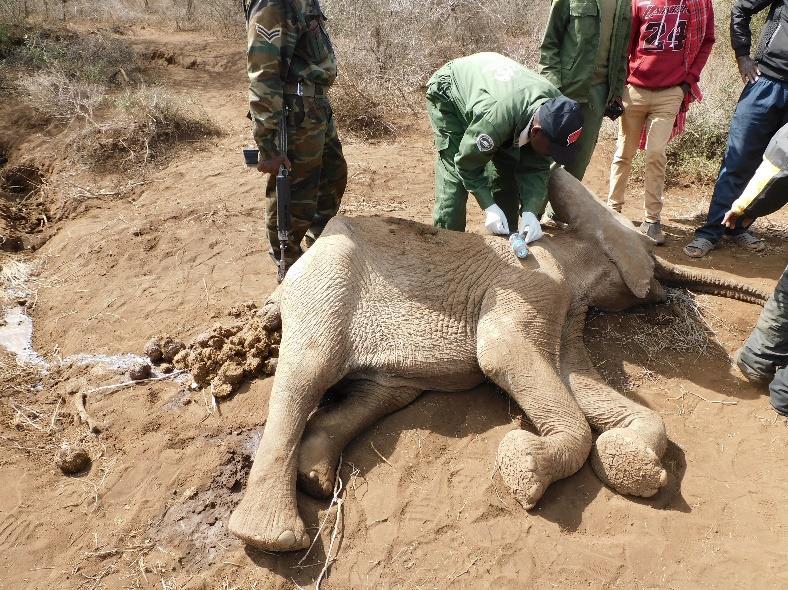
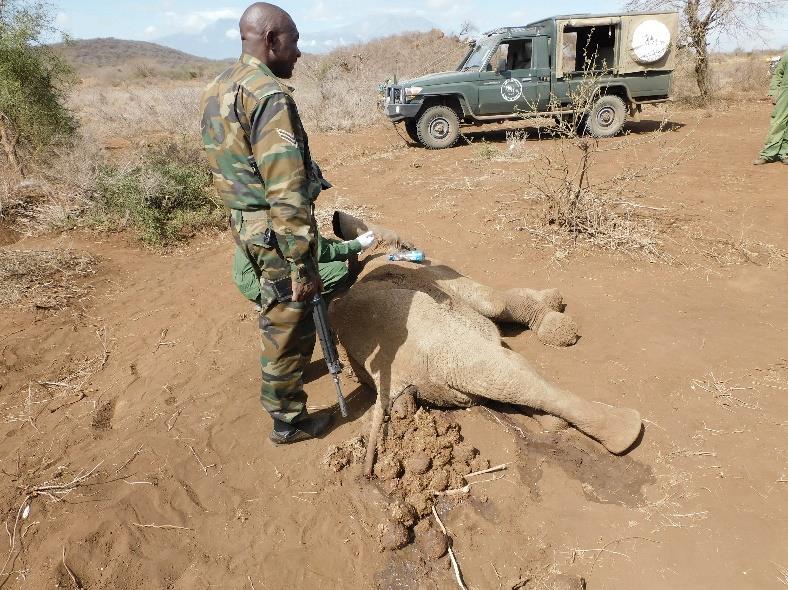
The elephant calf was approx. 5 years old, it was severely emaciated, and it had significantly pale mucous membranes; the spleen was pale and grey; the liver was enlarged, and it had prominent rounded ends. The stomach and duodenum were full of maggots; the small intestines membranes had ballooned and were full of fluke-like worms, approximately 100 or more worms for every 100 ml of intestinal fluid. The trachea was clean, and the lungs were pinkish.
The elephant died from drought related complications.
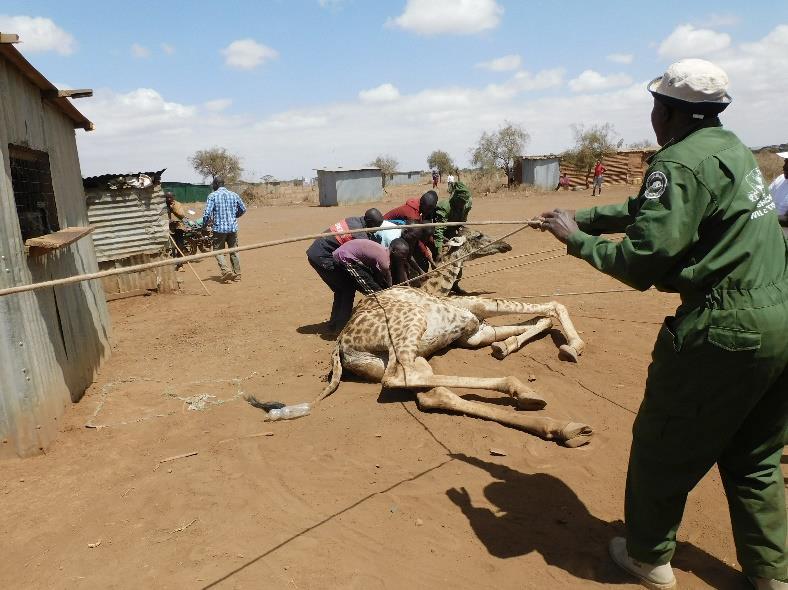
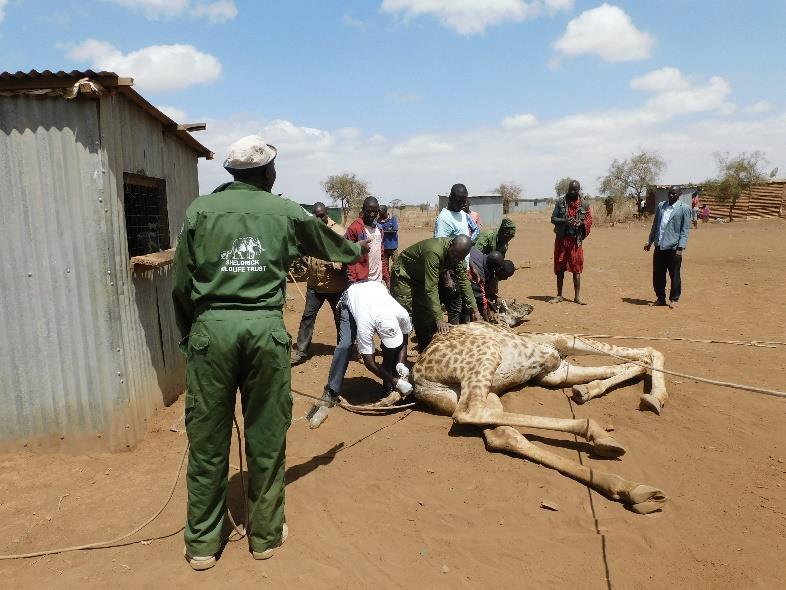
A shopkeeper reported a giraffe that fell outside her shop after it run into a clothesline at night. The giraffe had visited the village searching for browse.
The giraffe had collapsed and needed no more than manual restraint. The giraffe was given fluids for two consecutive days and supported to rise. However, the giraffe could not stand on its own. Sadly, the giraffe died on the 3rd day.
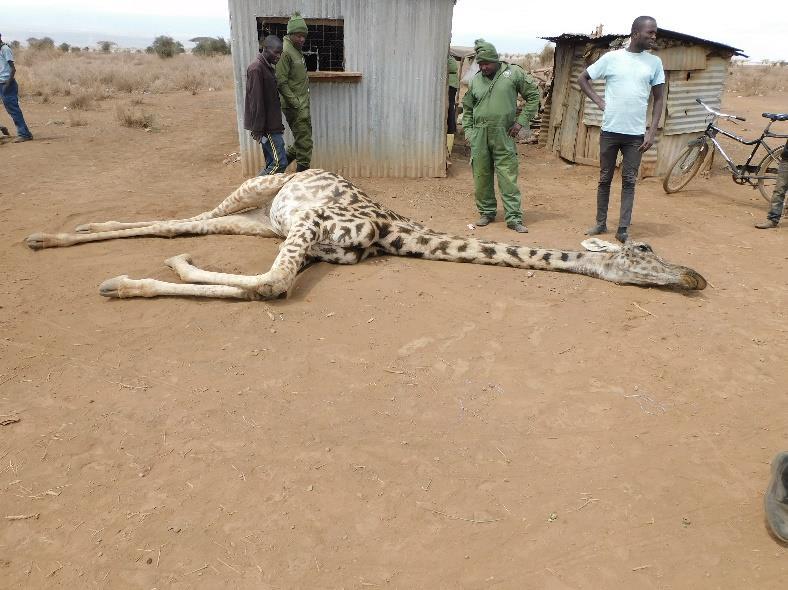
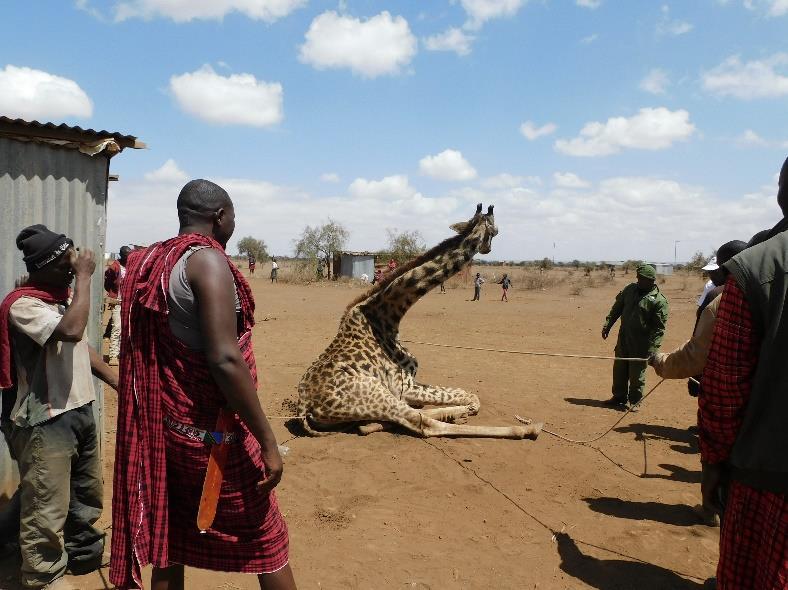
The Amboseli Elephant Research team and the Park Patrol team found the carcasses of 2 sub-adult male and female elephants and assisted the Veterinary Unit in undertaking post-mortem examinations.

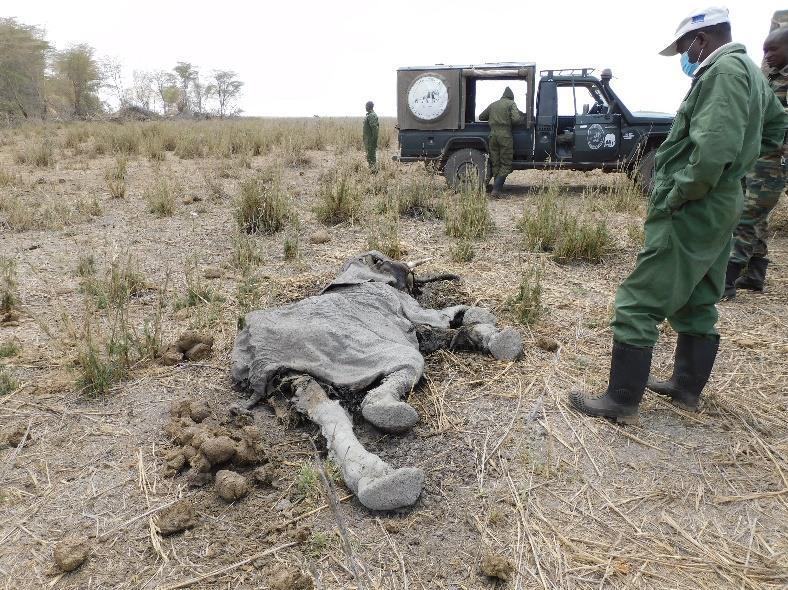
The first calf was found dead and decomposed, no pathology could be established from the remains. The second calf was severely emaciated with significantly pale mucous membranes.
The elephants died from drought related complications.
The Park patrol team reported an elephant calf found dead in the park. The patrol team led the Veterinary Unit to the carcass and assisted in the necropsy process.
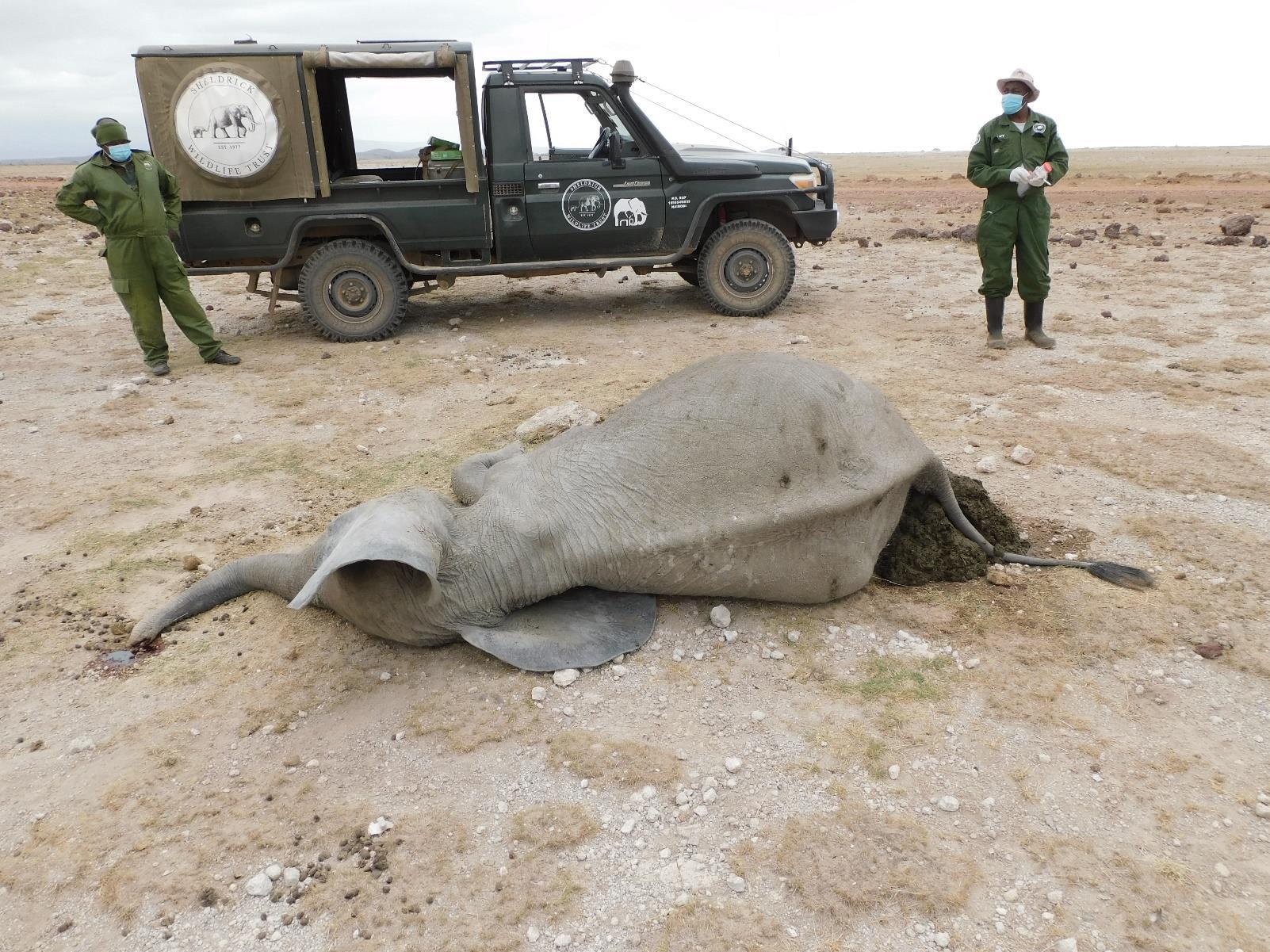
The elephant calf, approximately 3.5 to 4-year-old, was found dead and severely emaciated. It had significantly pale mucous membranes, and the faecal matter it had produced before death was full of threadlike worms.
The calf died from drought related complications.
The Amboseli Elephant Research team reported seeing an injured elephant. The injured elephant was in a herd, but it was less active in comparison with its counterparts
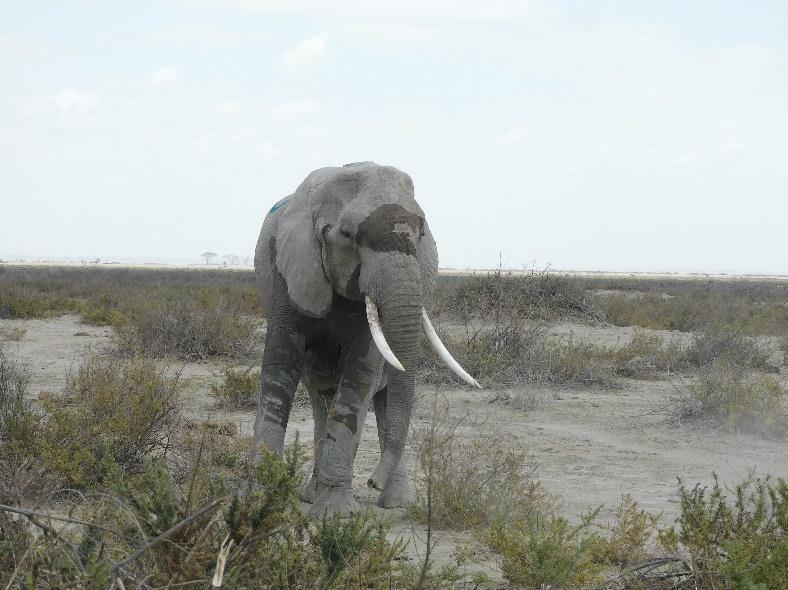
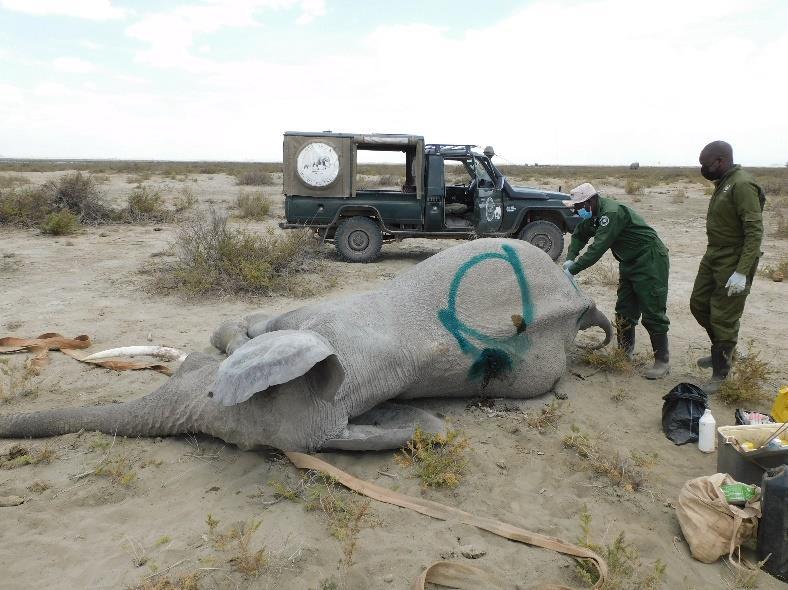
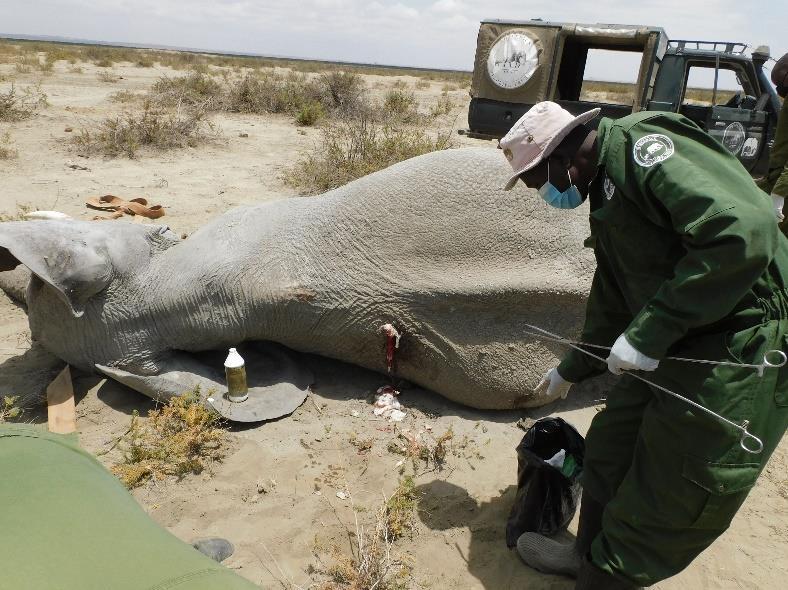
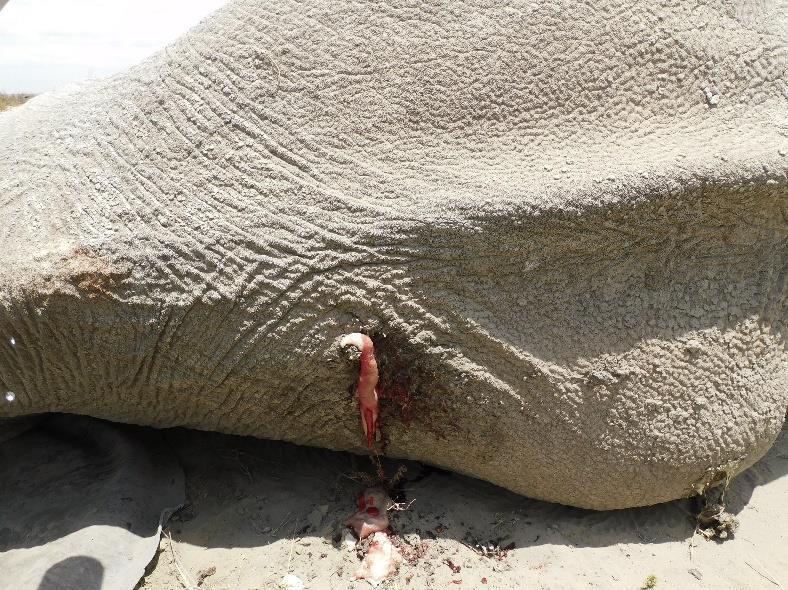
The elephant was darted with 20 mg Etorphine, complete immobilization was achieved in about 20 minutes. The elephant was in relatively good body condition, but it had an infected wound on the back. The wound was debrided with Hydrogen peroxide, disinfected with Iodine, sprayed with Oxytetracycline then anaesthesia was reversed.
The elephant has a good prognosis.
This adult male lion was reported to be injured. It had been disembowelled and was hardly mobile
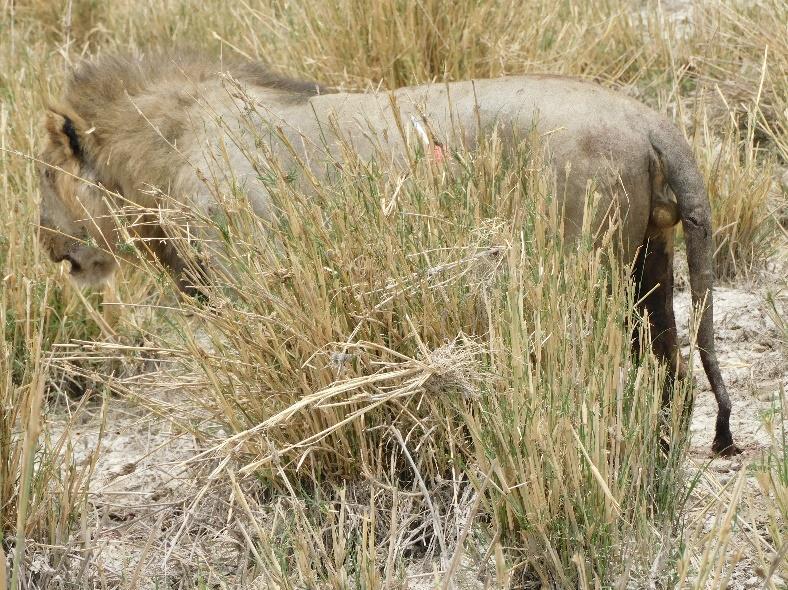
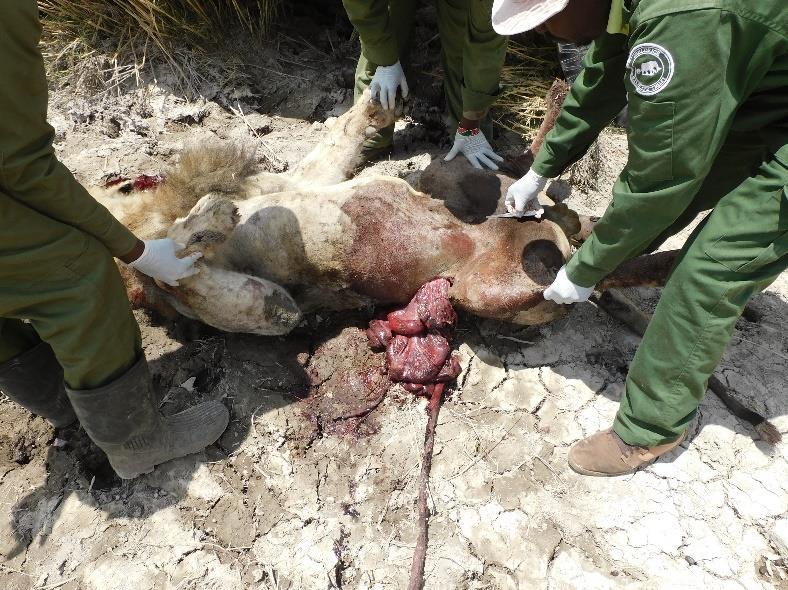
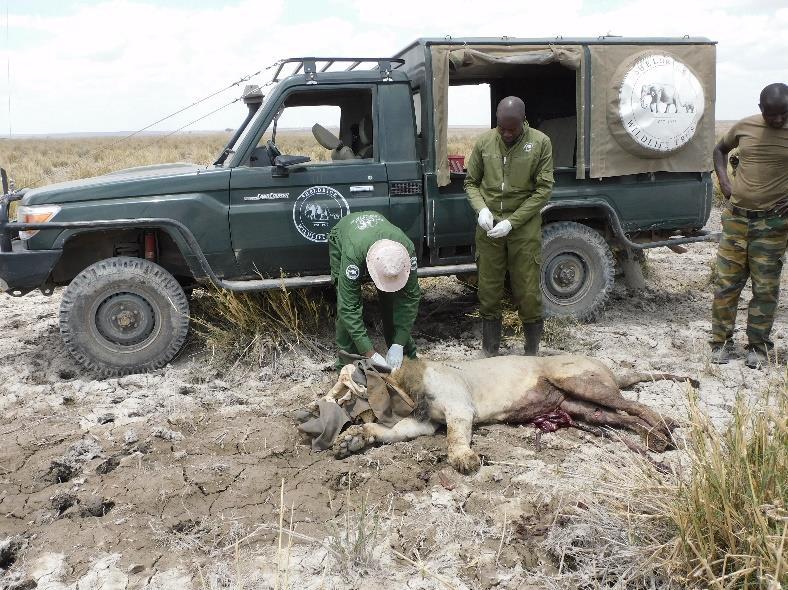

The lion was darted with 300 mg Ketamine and 6 mg Medetomidine. The 1st dart did not have the desired effect possibly due to the hormones produced by the lion to counter the excruciating pain it was experiencing. The 2nd dart took effect in about 20 minutes. The lion had a deep abdominal cut and exteriorized intestines. The stomach contents were however intact.
The lion had a poor prognosis, and it was therefore put to rest.
A giraffe wounded with a spear was seen in Kuku Group Ranch
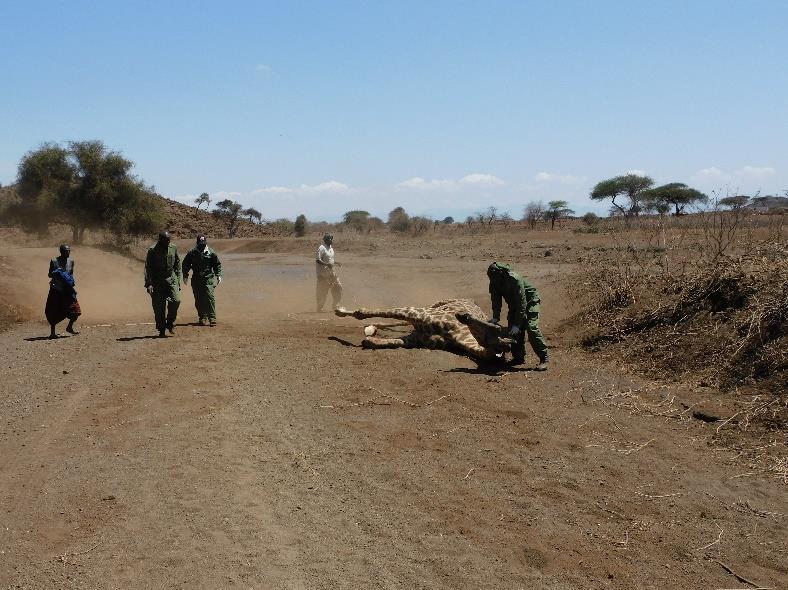
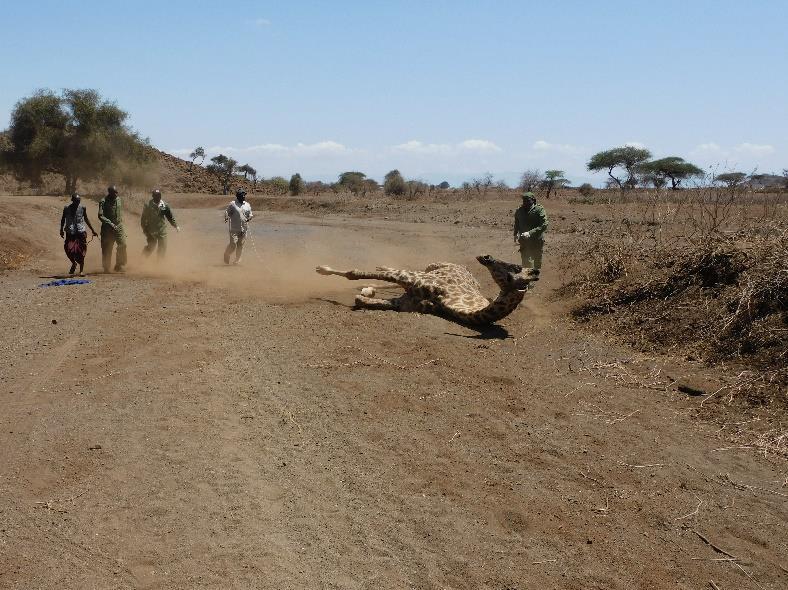
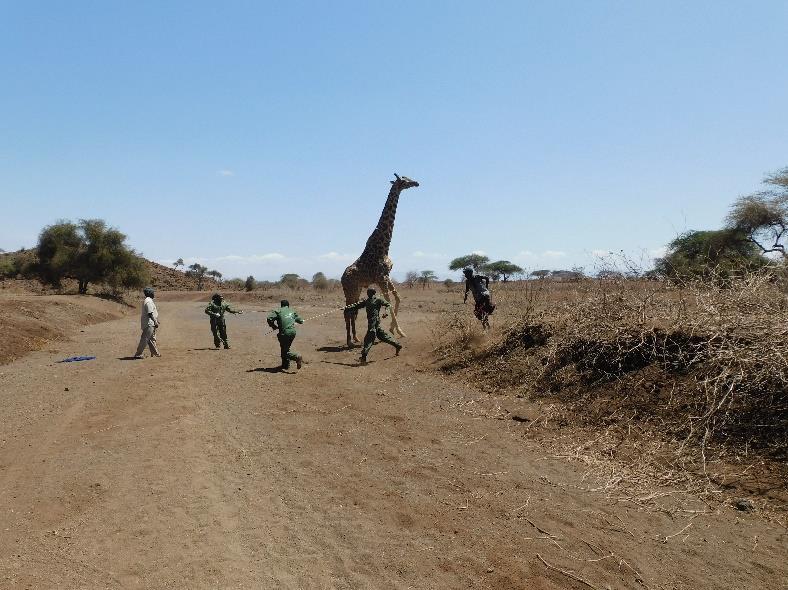
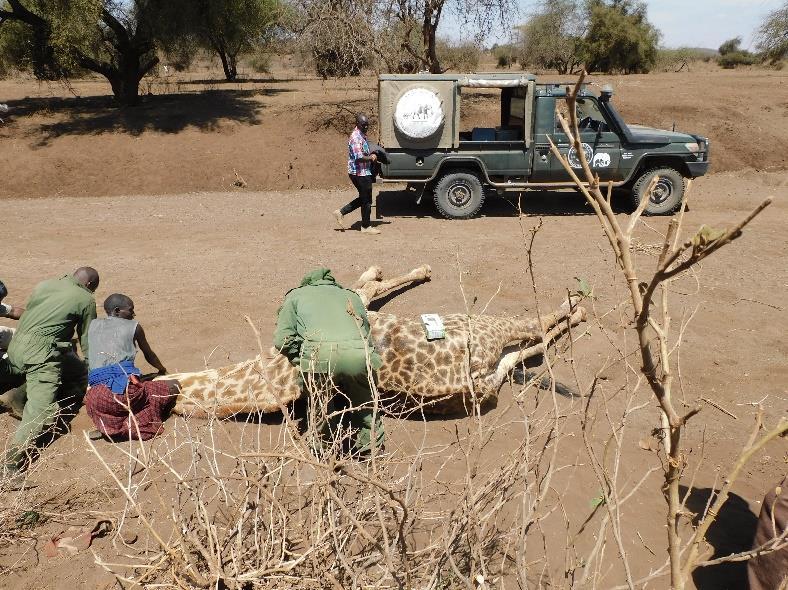
The male giraffe was darted with 12 mg Etorphine and 6 mg Medetomidine. The Veterinarian noted that a higher dosage of Medetomidine may be required for more effective immobilization in future given how long it took for the drugs to take effect. The giraffe was manually restrained after it was roped down The wound on the giraffe’s back was treated then 60ml Amoxicillin was administered intramuscularly to cover for systemic bacterial infections. Diprenorphine and Naltrexone were injected intravenously to revive the giraffe.
The giraffe has a good prognosis
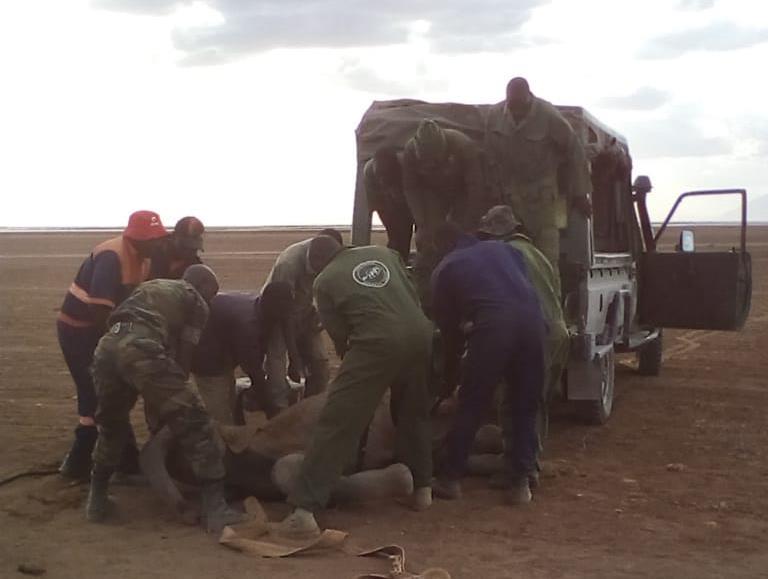
The Amboseli Mobile Veterinary Unit received a report of an elephant calf found abandoned at the dried-up Lake Amboseli. No prior history of the calf could be established.
The elephant calf was emaciated and severely dehydrated. It was captured manually, given supplementation fluids, and transported by vehicle to the SWT Umani Springs Elephant Rehabilitation Centre in Kibwezi Forest Reserve.
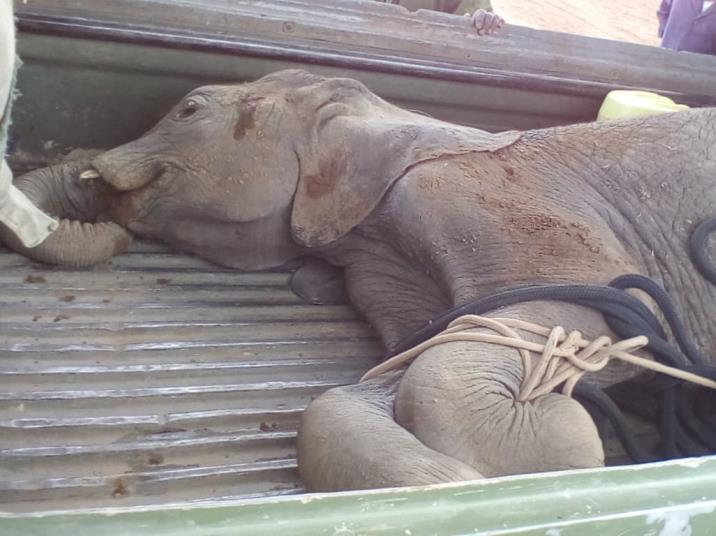
The calf has a good prognosis
The Amboseli Mobile Veterinary Unit continued the investigation of animal mortality in Amboseli National Park as a result of the drought. Between July & October 2022 496 animals died from drought related complications i.e. 15 Buffalo, 357 Wildebeest, 17 Elephant, and 80 Zebra. Herbivores presented with severe emaciation, and pale, dried mucous membranes. Zebras produced loose faecal material that had higher numbers of worms than is naturally normal. Wildebeest had signs of diarrhoea and exhibited hair matting around the anal opening
Animal Species No. Dead Buffalo 15 Elephant 17 Wildebeest 357 Zebra 80 Grand Total 469